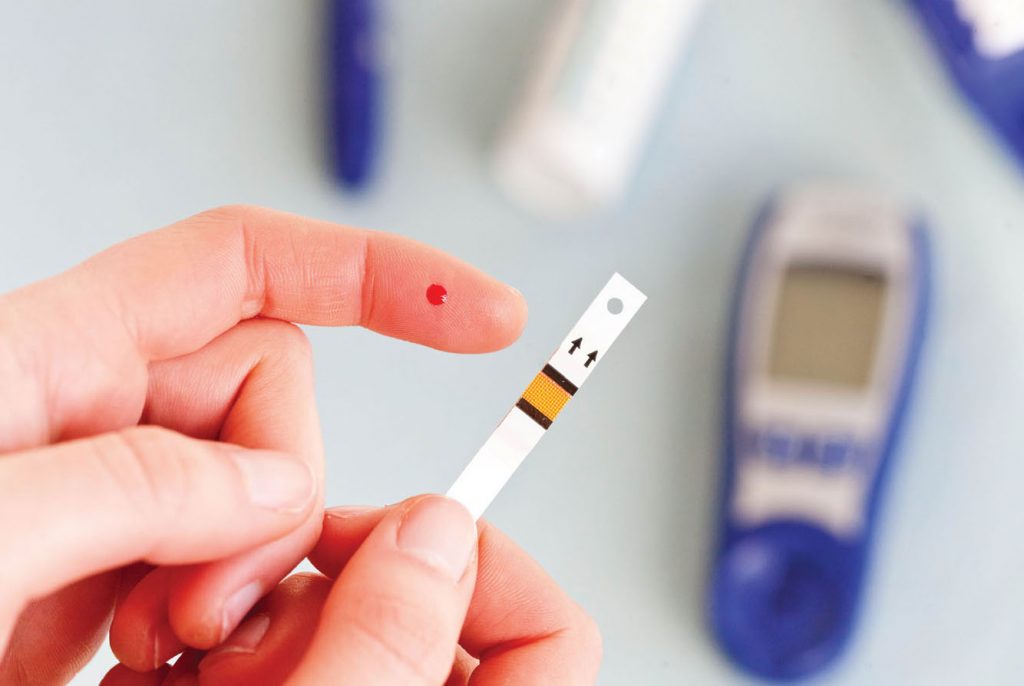Diabetes mellitus (DM), commonly referred to as diabetes, is a group of metabolic disorders in which there are high blood sugar levels over a prolonged period. Ingested food raises blood glucose levels rapidly.
The excess blood glucose molecules enter in Beta cells of the pancreas. Thus, Beta cells secrete insulin to bring down excess blood glucose to normal. When our body cells cannot utilize insulin, therefore, glucose cannot get converted to energy.
There are several symptoms and warning signs of developing diabetes. Having some of the signs of diabetes doesn’t mean you definitely have the condition. It is possible to have diabetes with only very mild symptoms or without developing any symptoms at all.
Diagnosis
It is more important to be alert always to the symptoms. If you’re experiencing more than one symptom, you should make an appointment with your doctor. It is proper to note down the symptoms you are experiencing recently. This may help your doctor to make the diagnosis and further lab tests to be done.
American Diabetes Association (ADA) has recommended below mentioned common tests for diabetes screening;
- Glycated hemoglobin(A1C)test. This blood test, which doesn’t require fasting, indicates your average blood sugar level for the past two to three months. It measures the percentage of blood sugar attached to hemoglobin, the oxygen-carrying protein in red blood cells.
The higher your blood sugar levels, the more hemoglobin you’ll have with sugar attached. An A1C level of 6.5 percent or higher on two separate tests indicates that you have diabetes. An A1C between 5.7 and 6.4 percent indicates prediabetes. Below 5.7 is considered normal.
If the A1C test results aren’t consistent, the test isn’t available, or you have certain conditions that can make the A1C test inaccurate – such as if you’re pregnant or have an uncommon form of hemoglobin (known as a hemoglobin variant)- your doctor may use the following tests to diagnose diabetes:
- Random blood sugar test. A blood sample will be taken at a random time. Regardless of when you last ate, a random blood sugar level of 200 milligrams per deciliter (mg/dL) – 11.1 millimoles per liter (mmol/L) – or higher suggests diabetes.
- Fasting Blood sugar test. A blood sample will be taken after an overnight fast. A fasting blood sugar level less than 100 mg/dL (5.6 mmol/L) is normal. A fasting blood sugar level from 100 to 125 mg/dL (5.6 to 6.9 mmol/L) is considered pre-diabetes. If it is 126 mg/dL (7 mmol/L) or higher on two separate tests, you have diabetes.
- Oral glucose tolerance test. For this test, you fast overnight, and the fasting blood sugar level is measured. then you drink a sugary liquid, and blood sugar levels are tested periodically for the next two hours.
A blood sugar level less than 140 mg/dL (7.8 mmol/L) is normal. A reading of more than 200 mg/dL (11.1 mmol/L) after two hours indicates diabetes. A reading between 140 and 199 mg/dL (7.8 mmol/L and 11.0 mmol/L) indicates pre-diabetes.
- Gestational Diabetes. The oral glucose tolerance test is to be done for gestational diabetics. Sometimes, glucose challenge tests could be performed by your physician. In this test, HCP will draw your blood one hour after you consume the sweet liquid containing glucose.
After diagnosis
- Regular Blood Pressure Check-ups
- Cholesterol Test
- Foot exam for diabetic foot
- ECG
- C-peptide test
- Other tests like eye exam, kidney function test, Liver function test, dental check-up, etc.
It is very difficult for someone to accept that he is diabetic. Diabetes requires regular conscious adjustments in lifestyle day in and day out. You have to understand the conditions of disease and discover the new practical ways to deal with it.
Make a promise to yourself that diabetes will not stop you. You have to adopt the basic changes in your lifestyle to lead a healthy life.
References;
- American Diabetes Association
- www.mayoclinic.org
